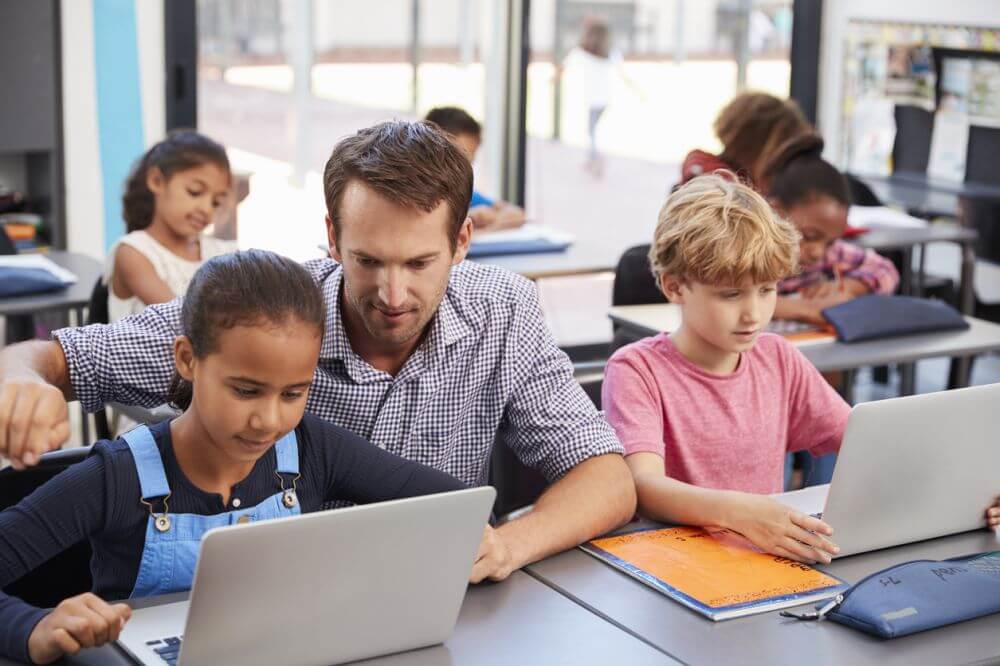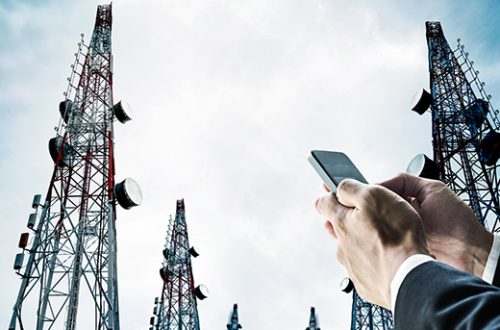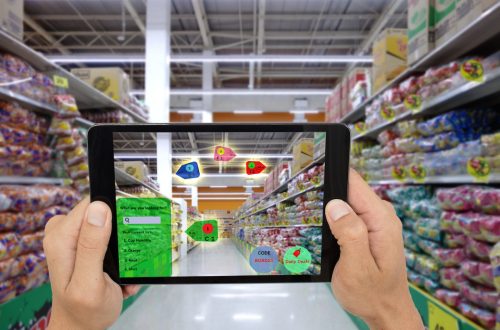The future of education technology is rapidly evolving, driven by technological advancements, changing societal needs, and the growing demand for more personalized, efficient, and accessible learning experiences. By 2025, the landscape of education will look vastly different from what it is today, with innovations designed to enhance both teaching and learning processes, making education more inclusive and adaptive to the needs of diverse learners.
In this article, we will explore the key trends and emerging technologies that are poised to shape the future of education by 2025. From artificial intelligence (AI) and virtual reality (VR) to personalized learning platforms and the rise of hybrid learning environments, these innovations are set to revolutionize how knowledge is delivered, acquired, and applied.
1. Artificial Intelligence and Personalized Learning
One of the most significant advancements in education technology is the rise of artificial intelligence (AI). AI-powered tools are increasingly being used to personalize learning experiences for students. By 2025, AI will play a pivotal role in tailoring educational content to individual learning styles, preferences, and paces.
Personalized learning platforms, powered by AI, will use data analytics to assess students’ strengths and weaknesses, adapting the curriculum in real-time to meet their needs. This dynamic approach will enable learners to progress at their own pace, ensuring that no student is left behind, and that each can receive the support they need to thrive. For instance, AI-powered tutoring systems can provide immediate feedback on assignments and help students with areas where they are struggling, providing an experience that mimics one-on-one tutoring.
Additionally, AI can analyze patterns in students’ learning behaviors, helping teachers identify potential learning gaps and areas where students might need more focused intervention. This proactive approach allows for more efficient teaching, reducing the reliance on traditional one-size-fits-all models and allowing educators to spend more time on individualized instruction.
2. Immersive Learning with Virtual and Augmented Reality
Virtual Reality (VR) and Augmented Reality (AR) are two technologies that are set to transform the classroom experience by 2025. These immersive tools will allow students to engage with educational content in a more interactive, visual, and hands-on manner.
In 2025, it is anticipated that VR will be used in a wide range of subjects, from history and science to medicine and engineering. Students could virtually travel to ancient civilizations, conduct scientific experiments in virtual labs, or practice complex surgical procedures in a simulated environment. These immersive experiences provide learners with the opportunity to explore and learn in ways that are not possible with traditional textbooks or online videos.
Augmented Reality, on the other hand, will overlay digital information onto the real world, enhancing physical classrooms and learning environments. AR can bring static images to life, provide interactive 3D models, and even offer real-time translations or explanations. For example, AR might allow a student to point their device at a diagram of the human heart and see an interactive 3D model of blood flow or anatomy in real time, thereby deepening their understanding of the topic.
Both VR and AR technologies have the potential to make education more engaging, immersive, and accessible. By enabling experiential learning, these technologies will foster creativity, critical thinking, and problem-solving skills in ways that traditional educational methods cannot.
3. Adaptive Learning Platforms
Adaptive learning platforms represent another technological advancement that will play a significant role in the future of education. These platforms use sophisticated algorithms to adjust the learning experience according to a student’s abilities, offering custom learning paths that accommodate their individual needs.
By 2025, adaptive learning systems will be ubiquitous, offering highly personalized learning experiences that optimize outcomes for students at all levels. Rather than following a fixed curriculum, adaptive learning platforms will provide real-time assessments, continuously monitoring students’ progress and adjusting the difficulty level of lessons to keep them challenged without overwhelming them. This flexibility will be particularly valuable for students with diverse learning styles or those who may need extra support.
Moreover, adaptive learning technologies will allow for more efficient assessment and feedback. Teachers will be able to use data from these platforms to identify which areas require further focus, while students will receive instant, actionable feedback, reducing the time spent waiting for grades and facilitating quicker learning cycles.
4. Collaborative and Social Learning Tools
The rise of online learning platforms and collaboration tools will continue to shape the future of education, particularly in the realm of hybrid and remote learning. As remote education becomes increasingly normalized, students will have access to a broader array of tools that enable them to collaborate with peers, participate in discussions, and engage in group projects from anywhere in the world.
By 2025, the integration of collaboration tools such as video conferencing, real-time document editing, and virtual classrooms will make learning more interactive and participatory. Virtual study groups, team-based projects, and peer-to-peer learning platforms will allow students to work together regardless of their physical location, fostering teamwork and enhancing communication skills.
Additionally, social learning platforms that allow students to connect with experts, mentors, and peers will continue to grow in importance. These platforms will provide avenues for students to engage in knowledge-sharing, ask questions, and receive support outside of traditional classroom settings, further enhancing the learning experience.
5. Data-Driven Insights and Predictive Analytics
Education technology in 2025 will harness the power of big data and predictive analytics to improve both teaching and learning outcomes. The use of data will become integral to understanding student performance, identifying trends, and making data-driven decisions.
Predictive analytics will allow educational institutions to anticipate student success, identifying those at risk of falling behind long before they fail. Early interventions will become the norm, with tailored support being provided to struggling students through personalized mentoring, additional resources, or adjusted learning plans.
Institutions will also use data to measure the effectiveness of various teaching strategies, analyzing which approaches yield the best results and continuously refining curriculum design. Teachers and administrators will be able to use real-time data to track student progress, identify bottlenecks in learning, and adjust their teaching methods accordingly.
6. Blockchain for Credentialing and Record-Keeping
By 2025, blockchain technology will play an important role in education, particularly in credentialing and record-keeping. With blockchain’s decentralized and secure nature, it can provide an immutable, verifiable digital record of a student’s academic achievements, certifications, and qualifications.
This technology will streamline the process of verifying credentials, reducing the administrative burden on educational institutions and ensuring that qualifications are authentic. Students will have greater control over their educational records, which can be securely shared with prospective employers or educational institutions, facilitating smoother transitions into the workforce or further education.
Moreover, blockchain can support the growth of micro-credentials, allowing students to earn certifications for specific skills, competencies, or knowledge areas outside of traditional degree programs. These verifiable credentials will help students showcase their abilities in a more granular and personalized manner, opening up new pathways for lifelong learning and skills development.
7. Sustainable and Green Education Technologies
As the world faces growing environmental challenges, the future of education will include a greater emphasis on sustainability. By 2025, educational institutions will increasingly adopt green technologies to reduce their carbon footprint and promote environmental awareness.
Cloud-based learning platforms, for example, will reduce the need for physical infrastructure and paper-based materials, contributing to sustainability efforts. Educational technologies like e-textbooks, online assessments, and digital assignments will decrease paper usage, while schools will also invest in energy-efficient devices and renewable energy solutions.
Additionally, educational curriculums may place more emphasis on teaching sustainability, climate change, and environmental responsibility, using technology to engage students in solving real-world problems related to the environment. By integrating sustainability into both the technology and content of education, institutions will prepare future generations to tackle the global challenges of tomorrow.
Conclusion
The future of education technology is bright, with innovations that will not only enhance learning experiences but also democratize access to education on a global scale. By 2025, AI, VR, adaptive learning platforms, and data-driven insights will redefine how we teach and learn, making education more personalized, immersive, and collaborative. Moreover, technologies like blockchain and green initiatives will ensure that education becomes more efficient, secure, and sustainable, preparing learners to thrive in an increasingly digital world.
For educators, institutions, and students, the key to success will lie in embracing these emerging technologies, adapting to new methods of learning, and fostering a mindset of continuous innovation. The classroom of the future, equipped with the tools of tomorrow, promises to be a space of endless possibilities, where learning is not confined to four walls but is an ongoing, dynamic process that empowers individuals to reach their fullest potential.






